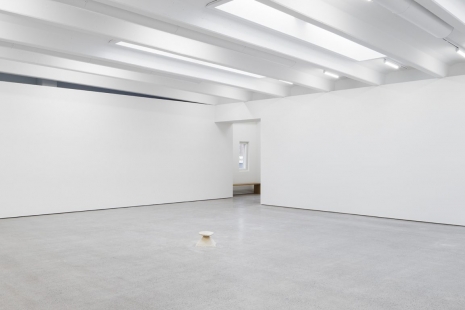The duo presentation has been a signature mode of operation for Kunsthalle Kohta since the inauguration four years ago. We experiment with varying degrees of sharing – time, time-and-space, time-and-space-and-concept – but usually the two artists mount simultaneous, separately titled exhibitions with a tangential conceptual connection between them.
Our next exhibition features new work by Pamela Brandt (Finland, 1950) and Rodrigo Hernández (Mexico/Portugal, 1983). At a cursory glance, they may seem an odd couple. Brandt is an idiosyncratic painter whose work has rarely been seen outside Helsinki, while Hernández probes the ever-shifting intersections of sculpture and painting and is steadily building an international reputation.
The two artists also turn to different intellectual and visual traditions for inspiration. In conversation about her paintings and drawings, Brandt repeatedly refers to cosmology, possible metaphorical interpretations of games and Jewish mysticism, while Hernández’s radiant polychromous pieces embody aesthetic sensibilities rooted in pre-colonial America and the twentieth-century global avant-garde.
Brandt challenges modernist ideas about what painting can and cannot do by reviving the nineteenth-century practice of the ‘thought-poem’. She strings together painted and drawn images into more or less linear narratives that reverberate with representational prohibitions. (Human faces, for instance, never occur in her work.)
Hernández picks through the leftovers of modernism, which he regards as an intelligent but doomed proposition, especially when it claimed, as in Mexico, to be a ‘perfect progressive synthesis’ of the international and the indigenous. His work may be read through the as yet scantily defined notion of ‘demodernisation’ (a redevelopment of ‘decolonisation’). How can we ‘de-develop’ the modern for the bright futures we may still want to achieve?
Yet when brought together, Brandt’s and Hernandez’s practices somehow touch each other. Although neither fully avoids referencing other people’s work, both are concerned with what might be called ‘fundamental artistic operations’. They articulate the previously unarticulated and create new images, new faces of the visual. And because they often find themselves in uncharted waters they also enlist words, spoken and written, for guidance.
This may sound rather abstract, but the exhibition will, we hope, demonstrate how these two modes of invention work in visual practice.
Under the overall title In the Beginning, Pamela Brandt will show 17 paintings in tempera an oil on canvas, mounted on aluminium (her usual technique) and 26 drawings in various techniques (pencil, colour pencil) on paper (all 2021). All of these also have individual titles. She will also execute the wall painting Cogwheels (2021), conceived specially for this exhibition.
As a complement to Brandt’s works, Georg Grotenfelt’s new film Pamela Brandt in Her Studio (2021, 16′) will be continuously screened in the exhibition. Produced by Nostalgia Film/Georg Grotenfelt. Music by Robin Brandt.
Rodrigo Hernández will show two new pieces (the term, with its modernist associations, is purposely chosen) that are both sculptures and paintings. The materials are cardboard, papier-mâché and oil paint and the titles are Petit-Musc 2 (a decoratively curled shape that snakes through the gallery space, suspended from the ceiling) and Petit-Musc 3 (two interconnected rectangles inscribing a sign-like human profile).





